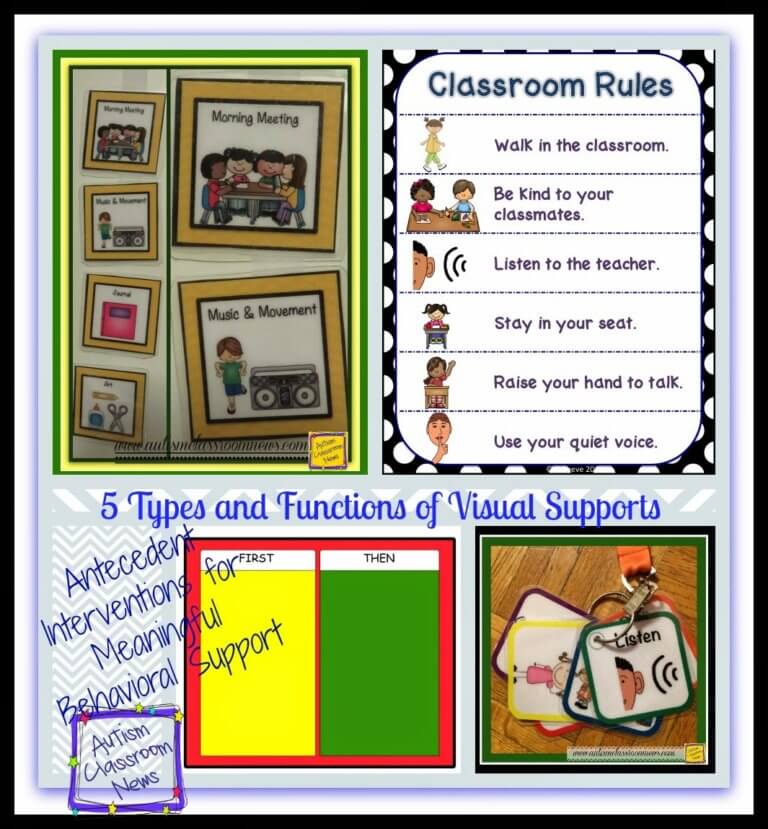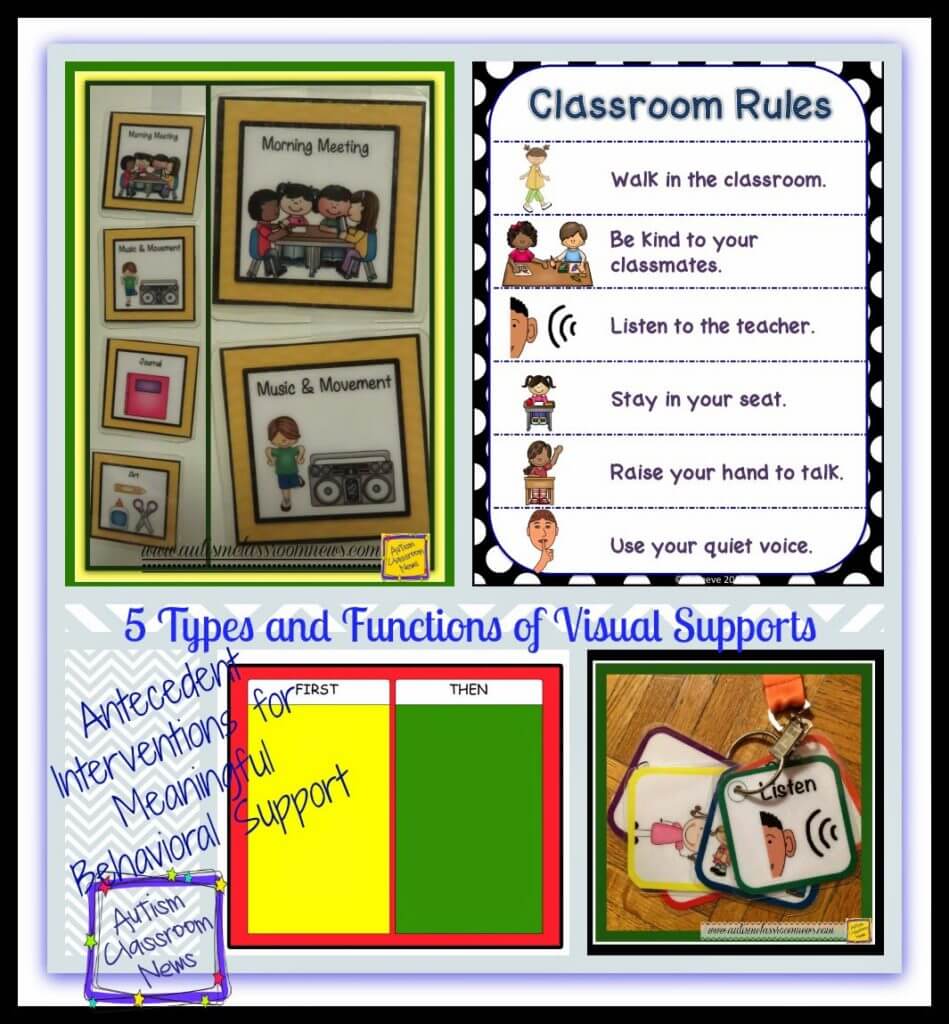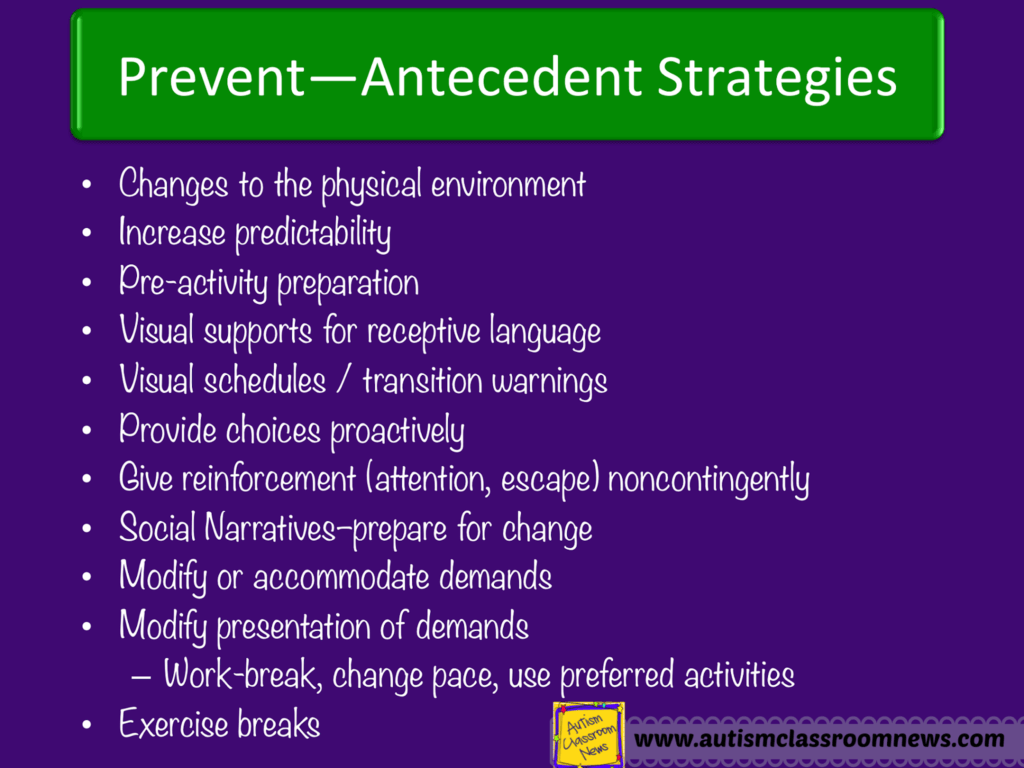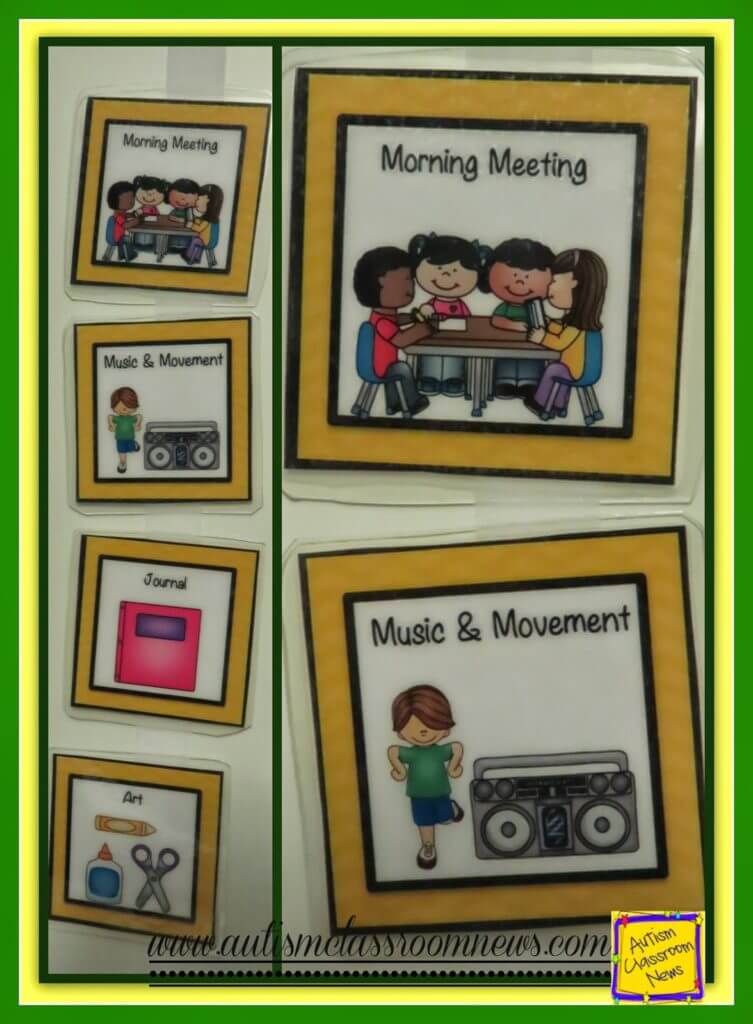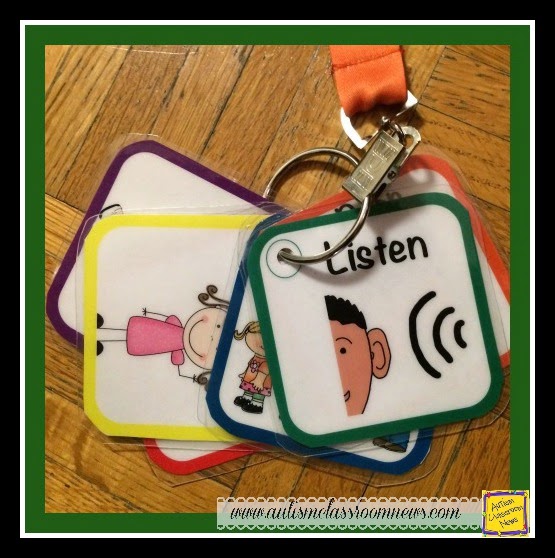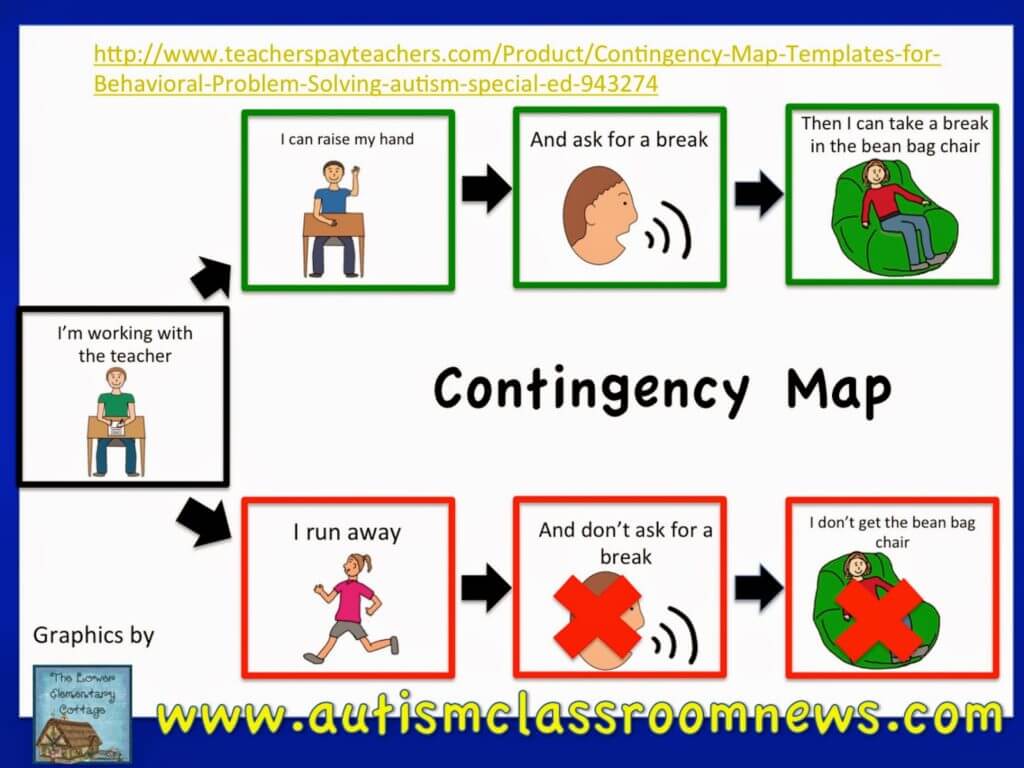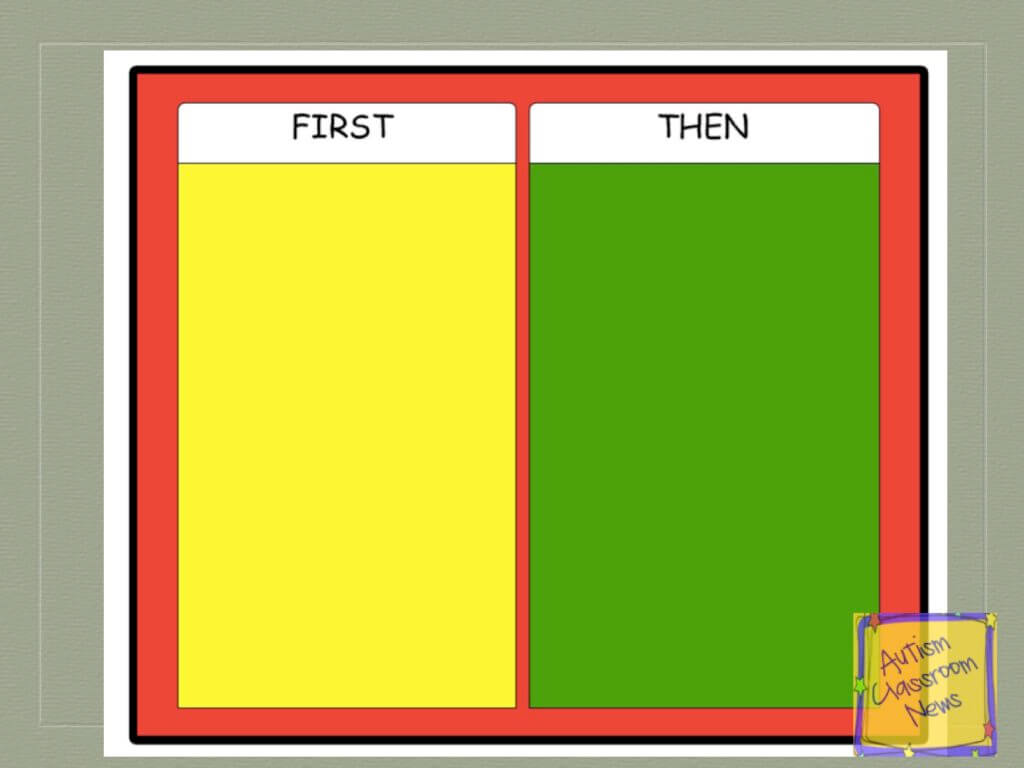In continuing the series 5 Steps to Meaningful Behavioral Support, we are on Step 4 of creating the behavior plan and choosing interventions. Remembering that our interventions must match our hypotheses, one of the first sets of strategies we use are often referred to as antecedent interventions because they address the antecedents to the challenging behavior based on your FBA. As you will remember (or click here to be reminded), one of the huge advantages of using a function-based approach to behavior support is that you can address behaviors before they happen to avoid them all together through prevention. So, today I’m going to talk about some of the more common antecedent strategies we might use.
Above are a list of common antecedent strategies we might use. I’m going to pull out a few of them over the next few posts in the series to talk about in more depth and hopefully give you some more ideas about how you can easily implement them in the classroom (or you can share your ideas in the comments, which would be fantastic!).
One of the most common antecedent strategies we use for individuals with autism are visual supports. We use them in many different ways and they serve different functions. I’m going to focus on five and give you some links to some more posts in which I talk about them some more. Essentially they all function to give information in a meaningful way.
1. Daily Schedules
It’s important to remember that there is no one-size fits all for individuals on the spectrum. I’ve had a number of questions recently in training and social media asking if every student has to have a picture schedule that goes from top to bottom. The answer is no they don’t, but everyone (with or without autism) benefits from having some expectation of the events of their day. I have a calendar and not only does it tell me when and where I am supposed to be at certain times, it reminds me of important things that have to be done at certain times. That’s my schedule.
Why We Use Them: Visual schedules serve three purposes in a classroom (at least). One is that they can help reduce anxiety and they give information to add predictability to the daily routine which can make transitions easier because the student knows what he/she is transitioning to. Another is that they can be used to teach the student to be more independent in the daily routine. If I can be where I’m supposed to be, when I’m supposed to be there with my schedule, then I am more independent if you have to tell me at each transition. And third, they also reduce power struggles by keeping the teacher from always having to direct the student. I can’t tell you how many times saying, “The schedule says it’s time for ….” worked so much better than me saying, “It’s time for ….” You can’t argue with the schedule (and even my slickest students don’t seem to understand I made the schedule so it’s the same thing). 🙂 A byproduct is that they also keep the staff on schedule which leads to less confusion at transitions as well.
When do we use them in behavioral support? When our FBA tells us that transitions are a common antecedent to challenging behavior and frequently the consequence is escape from the transition or the next task.
2. Visual Supports for Redirection
Another strategy we often use proactively is pairing our receptive language with visual supports. This includes pictures and gestures.
Why We Use Them: We use them because many if not most individuals with autism have difficulty understanding and processing language they hear from others. Even those highly verbal kids with echolalia often have difficulty understanding verbal language (even their own). In addition, when someone is upset or agitated (anyone, not just those on the spectrum) they have a harder time processing and using language. Ever been so mad you couldn’t even talk about it–nuff said. So, one thing we often do is provide directions paired with a visual cue. The cueing lanyard above is an example of a set of visual directions staff can carry with them to have to redirect students to what they want them to do. You will also see that all the visual redirections (in my world) are positively stated (“walk” instead of “don’t run”). This is because it is always important to redirect someone TO something you want them to do, rather than telling them what not to do. Telling them what not to do might stop them but the behavior is likely to continue if they don’t have something more appropriate to do.
When Do We Use Them in Behavioral Support? When the FBA shows that the student does not respond to verbal redirection and when “noncompliance” is often noted as the problem behavior–I use quotes because really it’s not noncompliance with directions so much as not understanding or attending to the directions. We also use them generally when we know that a student has difficulty understanding receptive language and when they become so upset that they are not able to understand or follow verbal directions.
3. Clear Expectations and Rules Presented Visually
Another way to prevent challenging behavior and support receptive language comprehension is to provide clear, understandable expectations for rules. These may be for the whole class, they might be student-specific, or they might be situation-specific. For instance, an art class may have (and probably does) different rules than the PE class. I usually tie the visual cues from #2 to the classroom rules with the same visuals. And again they are positively stated to tell students what TO do. Visual supports like stop signs can also tell students when things are off limits, like the finished sign on the computer below (click on the picture to get your free finished and stop signs).
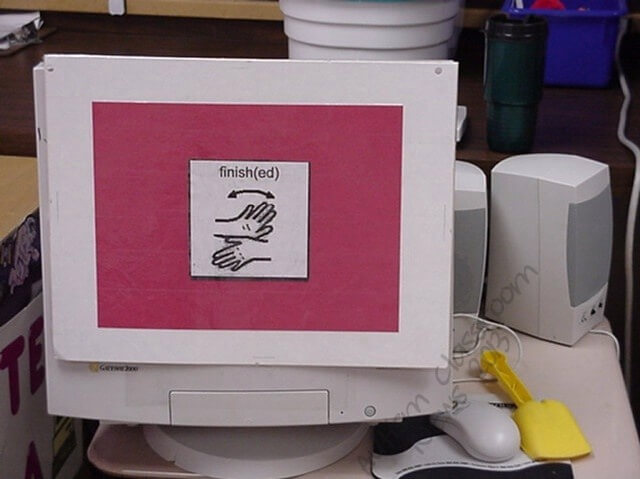 Why Do We Use Them? We use them because we know that when we have given clear expectations to students, they are more likely to follow them. We include pictures (at times) because students who have difficulty with receptive language and reading benefit from them.
Why Do We Use Them? We use them because we know that when we have given clear expectations to students, they are more likely to follow them. We include pictures (at times) because students who have difficulty with receptive language and reading benefit from them.
When Do We Use Them in Behavioral Support? If our FBA indicates antecedents of being given a direction before a challenging behavior or when the challenging behaviors themselves run contrary to the classroom expectations (e.g., they yell in class instead of raising their hand), visual rules can clarify what the behavioral expectations are for the environment and you can tie a reinforcement system to following the rules and demonstrating appropriate behavior.
4. Contingency Maps
Contingency maps are another type of visual support that presents clear information about the expectations and about the natural consequence of behavior. [click the picture to download a free set].
Why Do We Use Them? Essentially a contingency map tells the student if I engage in one behavior, I get something I want (a reinforcer/reward). If I engage in another behavior, then I won’t get it and may have some other consequence for the behavior. So, we use them to make these contingencies more clear and apparent prior to giving a direction. This can help the student process the potential consequences of his/her actions.
When Do We Use Them in Behavioral Support? We could use a contingency map as a general proactive strategy, but we can also use it as a preventive strategy when our FBA indicates that the student benefits from visual supports for understanding receptive language and that the common outcome of challenging behavior appears to be escaping from a situation. The contingency map helps them see that following the direction or doing what they are expected to do will lead to something that they like in the longer term.
5. Mini-Schedules and First-Then Schedules
In addition to daily schedules, some students benefit from having tasks broken down into smaller segments using mini-schedules or event just a first-then schedule. Mini-schedules outline the expectations of a specific activity, like the picture to the left is set up to show a student what he is doing while in the library. First-then schedules are often used at transitions to show a student what we want them to do first and then what they get to do next. This often takes the form of the student needing to do something he/she is not as fond of, followed by something more desired.
Why Do We Use Them? Again, just like all the other visual supports, the pictures or words presented take the power struggle out of giving the direction and provide predictability for understanding what is going to happen next.
When Do We Use Them in Behavioral Support? When we see that the common antecedents are transitions or directions and common functions are often to escape or avoid a situation, then these types of supports can be helpful. They can also be helpful if the function of behavior is to gain attention or an item or activity if the schedule shows when they will have access to it.
So throughout this post there are freebies for the first-then schedule, the contingency map, the stop sign, and the classroom rules. I recently added to my store bundles of visuals that include
- 15 individual daily colored picture schedules,
- 8 colored written individual schedules,
- 3 mini-schedules,
- class rules in different formats,
- a stop sign,
- a first-then board,
- the visual cues for the lanyard above,
- and group schedule and check-in visuals
all in colorful themes for elementary/preschool and middle/high school. You can find out more about them by clicking here or on the picture below.

